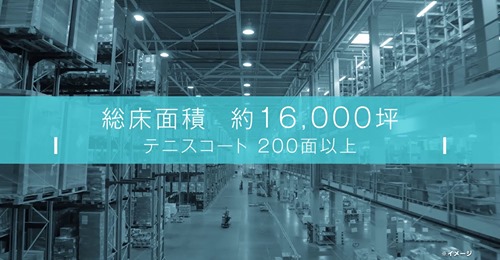
1/ Introduction to MRO
MRO stands for Maintenance, Repair, and Operations Supplies.
It encompasses all materials, equipment, and activities that don’t directly contribute to the end product but ensure production continues safely and efficiently.
From spare parts to safety gear, MRO keeps facilities and machinery running at peak performance.
2/ Core Components of MRO
- Maintenance, Repair & Operations Materials Items not used in the final product but essential to keep machinery and facilities operational.
- Safety and Personal Protective Equipment Gloves, masks, goggles, helmets, and respirators to protect workers and meet regulatory standards.
- Lubricants and Coolants Engine oil, hydraulic fluid, high-temperature grease, and coolants for machine upkeep.
- Adhesives and Sealants Epoxy, silicone, heat-resistant tapes, and bonding agents for general repairs and electronics.
- Tools and Test Equipment Wrenches, screwdrivers, pressure gauges, multimeters, moisture meters, and precision scales.
- Consumables and Office Supplies Paper, pens, printer ink, rags, cleaning chemicals, disposable gloves, and waste bins.
|
MRO Category |
Examples |
|---|---|
|
Maintenance & Repair |
|
|
Lubricants & Coolants |
Hydraulic oil, high-temp grease |
|
Adhesives & Sealants |
Epoxy, silicone sealant |
|
Safety & Protective Equipment |
Gloves, safety glasses, hard hats |
|
Tools & Test Equipment |
Wrench sets, multimeters, precision scales |
|
Consumables & Office Supplies |
Paper, pens, cleaning wipes, solvents |
3/ MRO Management Process
3.1/ Plan Preventive Maintenance Schedule regular upkeep based on usage rates and equipment criticality to avoid unexpected downtime.
3.2/ Procure and Vet Suppliers Negotiate contracts and verify incoming goods match technical specifications set by engineering.
3.3/ Receive and Control Inventory
- Inspect, sort, and label all incoming items.
- Use FIFO or FEFO methods to minimize spoilage and obsolescence.
3.4/ Perform Maintenance Tasks Technicians dismantle, repair, or replace failed parts, then update service records in the CMMS.
3.5/ Dispose of Obsolete Equipment Identify end-of-life assets, then recycle or discard following environmental and safety regulations.
4/ Key Performance Indicators (KPIs) in MRO
- Availability (A): Percentage of time equipment is ready for operation.
- Mean Time Between Failures (MTBF): Average operating time between breakdowns.
- Mean Time To Repair (MTTR): Average time to restore equipment after a failure.
- Overall Equipment Effectiveness (OEE):
A is Availability
P is Performance relative to design capacity
Q is Quality yield of acceptable products
5/ Technologies Supporting MRO
- CMMS (Computerized Maintenance Management System) Automates maintenance schedules, tracks repair histories, and manages assets (e.g., IBM Maximo, Infor EAM).
- SAP Plant Maintenance (SAP PM) Integrates maintenance, procurement, and finance within the SAP ERP ecosystem.
- IoT & Smart Sensors Real-time monitoring of vibration, temperature, and pressure to enable predictive interventions.
6/ Challenges & Optimal Solutions
- Excess Inventory Tying Up Capital Solution: Use ABC/XYZ analysis and Kanban to optimize stock levels.
- Unexpected Downtime Due to Missing Parts Solution: Define safety stock based on lead times and demand variability.
- High MRO Spend Solution: Negotiate long-term supplier agreements, consolidate purchases, and bundle orders.
- Inconsistent Procedures Solution: Develop standard operating procedures (SOPs), train staff, and conduct regular audits.
7/ Industry-Specific MRO Applications
7.1/ Automotive Manufacturing
- Maintain stamping presses, CNC lathes, and robotic welding cells.
- Stock oils, hydraulic fluids, bearings, and drive belts for quick swap-outs.
- Use torque wrenches, precision screwdrivers, and pressure gauges to ensure assembly accuracy.
- Provide PPE (gloves, safety glasses) and cleaning supplies to keep workcells safe and clean.
7.2/ Aerospace
- Service turbine engines, hydraulic systems, and fuel lines on aircraft.
- Keep spare bearings, seals, fuel filters, and specialty turbo oils on hand.
- Utilize vibration analysis gear and laser alignment tools to detect early faults.
- Adhere to strict NDT (non-destructive testing) schedules for pressure-critical components.
7.3/ Power Generation
- Overhaul steam turbines, generators, and insulation systems at thermal power plants.
- Store impellers, carbon brushes, bearings, and transformer oils for swift exchange.
- Deploy IoT sensors to monitor temperature, pressure, and vibration for predictive maintenance.
- Schedule automated CMMS tasks for oil changes, cooler cleanings, and safety inspections.
7.4/ Healthcare
- Service X-ray machines, CT scanners, and ultrasound units: replace tubes, filters, sensors.
- Perform routine calibration of diagnostic equipment to maintain imaging accuracy.
- Keep spare X-ray tubes, transducers, pressure regulators, and thermal paste.
- Enforce sterile handling of tools and cleaning protocols to prevent infections.
7.5/ Facility & Infrastructure Management
- Maintain HVAC systems: change air filters, service pumps, clean coils.
- Service elevators and automated parking systems: swap cables, pulleys, gearbox oil.
- Keep lighting fixtures, ballasts, UPS modules for emergency systems.
- Stock janitorial supplies: detergents, microfiber cloths, protective gloves.
|
Industry |
Key Materials & Parts |
Enabling Technologies |
|---|---|---|
|
Automotive |
Oils, bearings, drive belts |
CMMS, pressure monitoring |
|
Aerospace |
Seals, filters, bearings |
Vibration analysis, NDT |
|
Power Generation |
Brushes, bearings, insulation oils |
IoT sensors, predictive analytics |
|
Healthcare |
X-ray tubes, sensors, thermal paste |
Calibration software, sterilization |
|
Facility Management |
Air filters, UPS batteries, elevator parts |
SOPs, scheduled audits |
 8/ Emerging MRO Technologies
8/ Emerging MRO Technologies
8.1/ AI-Driven Predictive Maintenance
Leverage machine learning to analyze sensor data - vibration, temperature, acoustic signals - and forecast failures before they occur.
Automatically schedule repairs and order replacement parts to minimize downtime.
8.2/ Digital Twin & Digital Thread
Create a virtual replica of equipment or an entire plant to simulate operations and failure modes.
Link design data (CAD), real-time telemetry (SCADA), and maintenance records to streamline decision-making without halting production.
8.3/ IoT & Edge Computing
Embed smart sensors in equipment, process data locally on edge devices, and only transmit critical alerts to the cloud.
Ideal for remote or bandwidth-constrained sites like offshore rigs and mining operations.
8.4/ AR/VR & Remote Assistance
Use augmented reality headsets to overlay wiring diagrams and torque specs directly onto equipment.
Enable experts to remotely guide technicians via live video with annotations.
8.5/ On-Demand 3D-Printed Parts
Produce replacement components in metal or high-performance polymers on the shop floor.
Reduce inventory, compress lead times, and fabricate complex geometries impossible with traditional machining.
8.6/ Robots & Inspection Drones
Deploy cobots to perform repetitive tasks like fastening and lubrication.
Use drones equipped with thermal cameras and LiDAR to inspect pipelines, tanks, and high-rise facades safely.
8.7/ Blockchain for MRO Supply Chain
Maintain an immutable ledger of part provenance, quality certifications, and handoffs.
Smart contracts can automate payments when parts pass inspection, reducing fraud and documentation delays.
8.8/ Smart Materials & Next-Gen Lubricants
Self-healing polymers and nano-enhanced coatings detect and repair microcracks.
Advanced lubricants with embedded nanoparticles rebuild protective films under extreme conditions, extending maintenance intervals.
|
Technology |
Core Function |
Primary Benefit |
|---|---|---|
|
Predictive Maintenance |
Early fault detection via AI |
Lower downtime, cost savings |
|
Digital Twin & Thread |
Virtual simulation & data linkage |
Process optimization, faster maintenance |
|
IoT & Edge Computing |
Real-time monitoring at the edge |
Reduced latency, bandwidth efficiency |
|
AR/VR & Remote Assistance |
Interactive, on-site guidance |
Higher technician accuracy, fewer errors |
|
3D-Printed Parts |
On-demand spare part production |
Lower inventory, faster response |
|
Robots & Inspection Drones |
Automated inspections & tasks |
Enhanced safety, consistent execution |
|
Blockchain Supply Chain |
Transparent, tamper-proof records |
Fraud prevention, faster warranty claims |
|
Smart Materials |
Self-repairing, condition-aware |
Extended service life, fewer maintenance stops |
Conclusion
Effective MRO management goes beyond just stocking spare parts.
It requires continuous process optimization, technology adoption, and data-driven decision-making to cut costs, boost productivity, and maintain safety.
Leveraging CMMS platforms, tracking KPIs, and optimizing inventory are critical steps toward sustainable competitive advantage.
QTE Technologies is a proud global MRO provider, serving customers in over 180 countries and always striving to ensure a complete and satisfying customer experience. Established in 2010, we supply over 1 million products across all industries and engineering disciplines. Additionally, you can reach us anytime via 24×7 chat support, phone, WhatsApp or email. Discover what our valued customers have to say about our services on our dedicated review page.
Article Author: QTE Technologies Editorial Team (with a strong background in both engineering and innovation - over 15 years of experience).




